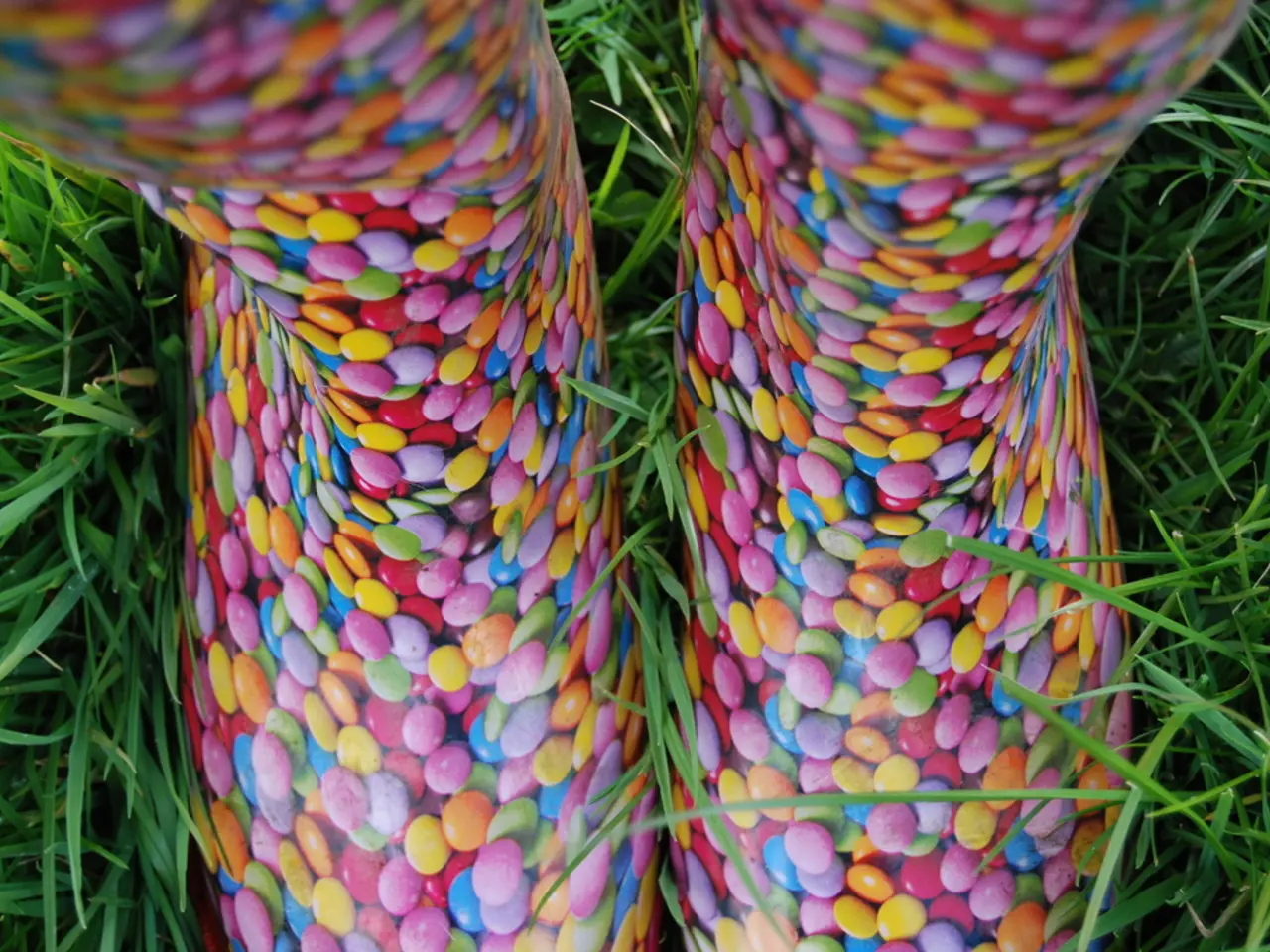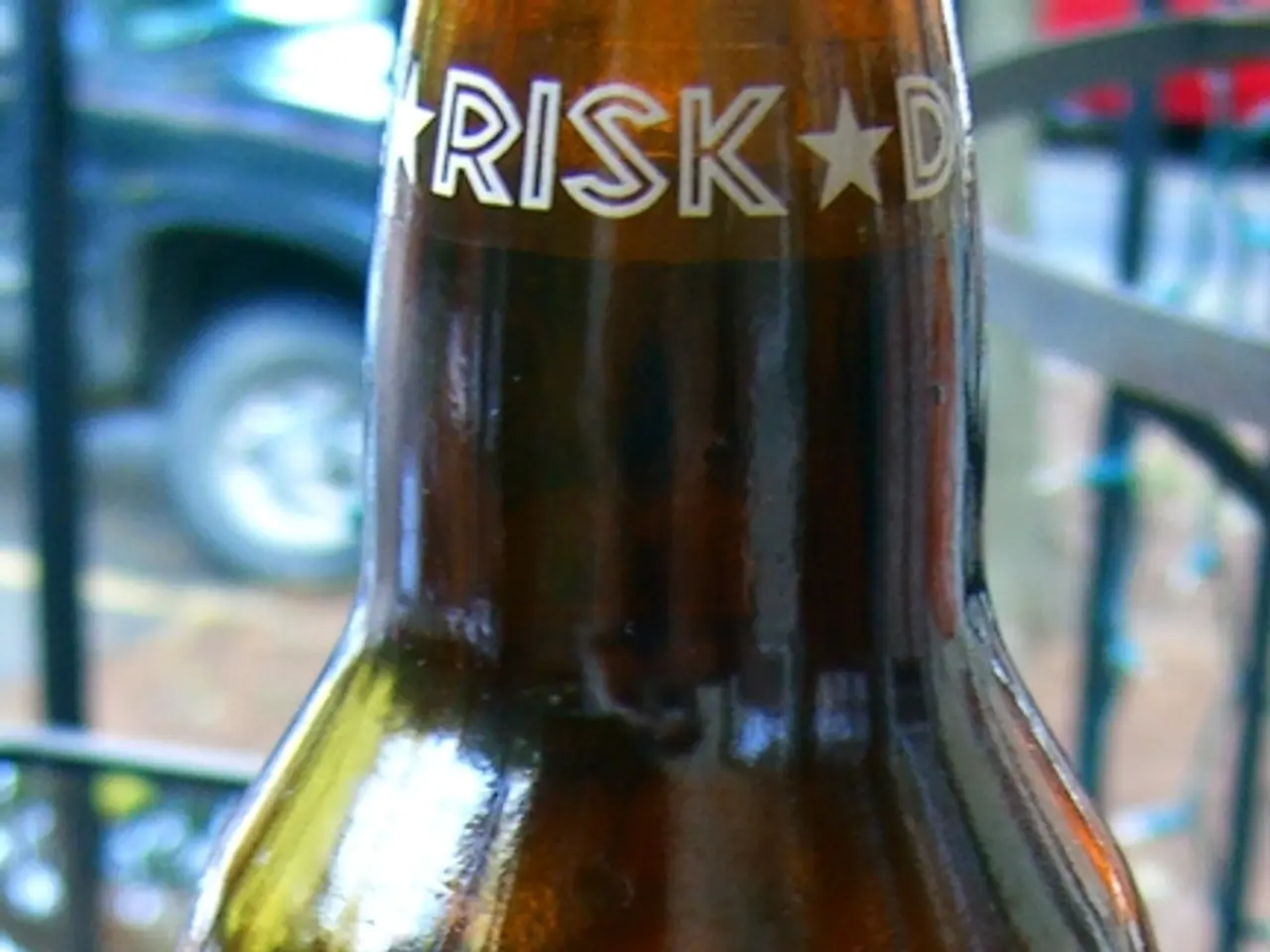Exploring Gemstone Luminescence: The Quest for Radiant Hues
UV Fluorescence Testing in Gemmology
Fluorescence testing is a valuable tool in gemmology, used to identify and authenticate various gemstones. By exposing gemstones to ultraviolet (UV) light, unique properties are revealed, providing diagnostic clues to distinguish genuine stones from imitations or treated ones [1].
The testing process involves observing the gemstone's color or glow response under UV light. For instance, diamonds often display characteristic fluorescence patterns or colors that help gemologists differentiate natural diamonds from synthetic ones or simulants [3][5]. Similarly, certain coloured stones, such as fluorite, also fluoresce, aiding in their identification, although it is not always conclusive on its own [2].
Two types of UV light are commonly used in testing gemstones: long wave (LWUV) with a principle wavelength of 365nm, and short wave (SWUV) with a principle wavelength of 254nm [4]. These lights can be found in UV keyrings, which are handy for quick tests, or in UV viewing cabinets for more comprehensive examinations [6].
When testing red to pink gemstones, natural rubies may have minimal to no fluorescence due to their iron content, while synthetic rubies tend to have much stronger fluorescent reactions [4]. On the other hand, when testing green gemstones, fluorescence can be tricky to use for identification purposes, but it may be useful in recognizing the presence of fillers in emeralds or green jadeite jade [4].
It is important to remember that any exposure to UV light can damage your eyes, particularly when using SWUV, which is more dangerous than LWUV [7]. To properly use a UV keyring, never look directly into the light, turn off surrounding lights so you are in a dark environment, place the gemstone table-down if facetted, hold the keyring approximately two inches away from the stone, record whether the stone is inert or fluorescing, and the strength of the reaction [8].
Citrine quartz is inert to fluorescence, due to the presence of iron [4]. Untreated green jadeite does not fluoresce, so any other reaction should be regarded with suspicion and further testing will be needed [4].
The visible light emitted during fluorescence stops when the source of illumination is turned off [9]. This property, along with the fact that the fluorescent emission of light will always be of a longer wavelength than the excitation source (as stated by the 'Stokes Law of Fluorescence') [10], makes fluorescence a reliable and non-destructive technique in gemmology.
Sir George Stokes extensively documented fluorescence in relation to gemmology in 1852 and coined the term fluorescence [1]. Today, fluorescence testing is an essential part of a gemologist's toolkit, often used alongside other tests such as hardness or refractive index measurements to confirm gemstone identity and detect treatments or synthetic origins [1][5].
References: [1] GIA. (2021). Fluorescence. Retrieved from https://www.gia.edu/fluorescence [2] GIA. (2019). Fluorite. Retrieved from https://www.gia.edu/gem-classification/mineral-species/fluorite [3] GIA. (2021). Diamond Fluorescence. Retrieved from https://www.gia.edu/diamond-fluorescence [4] GIA. (2021). Ruby Fluorescence. Retrieved from https://www.gia.edu/ruby-fluorescence [5] GIA. (2021). Emerald Fluorescence. Retrieved from https://www.gia.edu/emerald-fluorescence [6] GIA. (2021). UV Cabinet. Retrieved from https://www.gia.edu/uv-cabinet [7] GIA. (2021). UV Keyring. Retrieved from https://www.gia.edu/uv-keyring [8] GIA. (2021). How to Use a UV Keyring. Retrieved from https://www.gia.edu/how-to-use-a-uv-keyring [9] GIA. (2021). Phosphorescence. Retrieved from https://www.gia.edu/phosphorescence [10] Stokes, G. G. (1852). On the Radiating Power of Excited Bodies. Philosophical Magazine, 17, 147-164.
- Besides diamonds, citrine quartz is inert to fluorescence, offering a unique characteristic for gemmologists during identification.
- UV testing in gemmology is not only valuable for identifying diamonds but also for verifying the authenticity of other colored stones like fluorite.
- When testing medical-condition sensitive gemstones, such as red to pink gemstones like rubies, it is crucial to be aware that natural stones may exhibit minimal or no fluorescence compared to their synthetic counterparts.
- In health-and-wellness considerations, it is essential to remember that any exposure to UV light, particularly short wave UV, can potentially harm eyes and must be handled with caution.
- Publications and workshops in gemmology science often emphasize the importance of UV testing as an essential part of their comprehensive testing techniques, often used alongside hardness or refractive index measurements.




